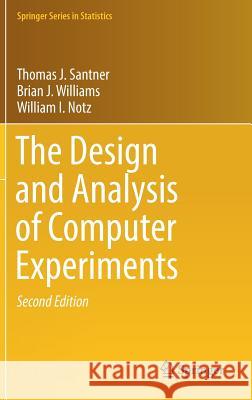The Design and Analysis of Computer Experiments » książka
topmenu
The Design and Analysis of Computer Experiments
ISBN-13: 9781493988457 / Angielski / Twarda / 2019 / 436 str.
Kategorie:
Kategorie BISAC:
Wydawca:
Springer
Seria wydawnicza:
Język:
Angielski
ISBN-13:
9781493988457
Rok wydania:
2019
Wydanie:
2018
Ilość stron:
436
Waga:
0.80 kg
Wymiary:
23.39 x 15.6 x 2.54
Oprawa:
Twarda
Wolumenów:
01
Dodatkowe informacje:
Wydanie ilustrowane











